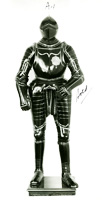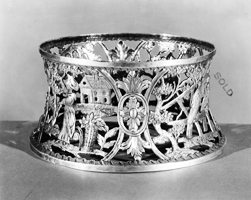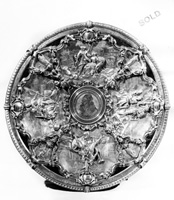Saint Donat's Castle, Wales
St. Donat 's Castle dates “mostly from the sixteenth century, but considerable vestiges of the earlier Norman structure (from the time of the Norman Conquest (c. 1200)) were preserved too, along with sections from the early 14th and late 15th centuries.” Sir Charles Allom, a colleague of Joseph Duveen who had also worked with Henry Clay Frick, set to work as the architect for the Castle's renovation under Hearst. Historical architectural elements, many of which came from the British Isles, were shipped to St. Donat's for repurposing, modification and installation, including entire buildings and intact rooms such as the 16th century dining room from St. Botolph's church in Boston, England. The Castle's art collections featured paintings, mostly portraits from the 15th and 16th centuries, and armor, much of which is now in the British Royal Armouries and the Keinbusch Collection at the Philadelphia Museum of Art. The collection also contained tapestries, exceptional works in silver and innumerable historical architectural elements. Hearst put the Castle up for sale in 1938, but without a buyer, the structure served in a military capacity during WWII. Following the war the property was managed by Hearst's National Magazine Company, and was purchased in 1960 by Monsieur Antonin Besse to establish the home of Atlantic College.
Images from the Archive There are five photo files containing images of items sold from the Office of Mr. J.P. Anderson. These items most likely represent the contents of St. Donat's collection of silver and armor.



